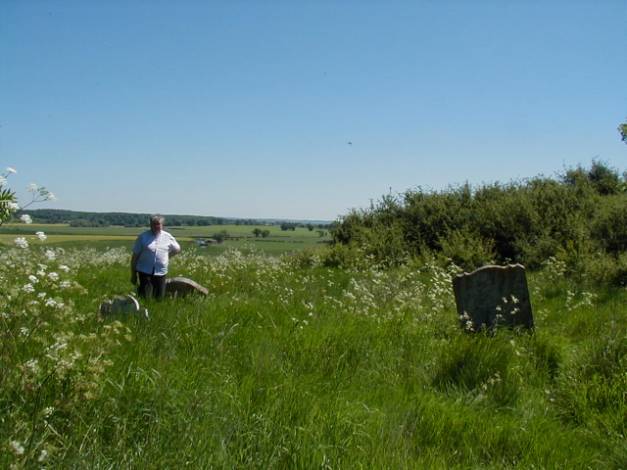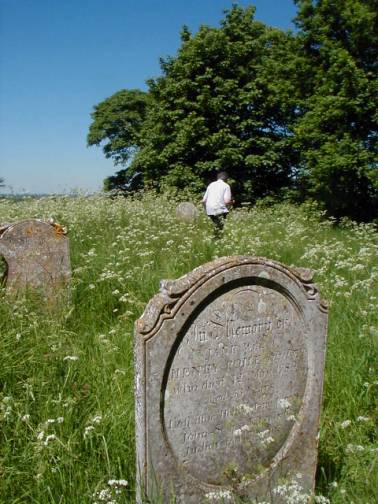
One of my ambitions, for this little break in Kent was to get on the Isle of Ebony. This is not a problem, for it lost its island status hundreds of years ago and is now just a gentle hill between Appledore and Tenterden, near a place called Reading Street.
In the distant past, there was a church on top of the hill, and, presumably, in island days there were dwellings too. Again, in the hundreds of years ago era, the people decided that it was far more convenient to live off the hill and this led to Reading Street becoming a community. The church, though stayed put and for all those ‘hatching, matching and dispatching’ services there was an inconvenient walk up the hill to Ebony Church – in truth, no more than a smallish chapel.
Then, in the nineteenth century – 1858 - the people decided to take it down, bit by bit and re-erect it at Reading Street. This left the hilltop in the tender care of the dead of the parish, buried in the graveyard on the hilltop. And amongst them were my 4 greats grandparents, George and Sarah King. I was fairly sure we’d find no stone, for none were listed for Kings in a 1917 survey. However, the people were up there and 3 Greats grandparents Sarah King and Walter Kesby married up on the hill on January 13th 1839.
We parked and set off across flat lands to the former island. It is but a little hill.

Of course, 1000 or so years ago, we’d have needed to swim across the water to Ebony. The island, which is now a hill of about 30 metres high, can’t have supported a huge population.

A couple of walkers approach the Isle of Ebony.

Across the wheat field we looked at some houses in the Reading Street area.

This is known as Chapel Bank Farm. Chapel Bank is what the old island is now called.

A walker, shaded from the heat of the sun, climbs a stile. It doesn’t look as though many walkers head up onto the old island.
As we climbed on to Ebony, there was a view back to Chapel Bank Farm and Reading Street.


A view across the fields of yellow oil seed rape and wheat drew the eye to the old oast houses. These were places where hops, used to flavour bitter beer, were dried.

This one, like most that survive, is now part of a desirable residence.

We reached the top of the hill. There were quite newly planted trees and seats there, memorials to people who had died quite recently. We wandered through the waist high wilderness, looking at graves from the old days, when a chapel stood on the hill – perhaps just here.

It may not look it, but this area was flat and free of graves so surely this was where Walter Kesby and Sarah King, my great great grandparents, married in 1836.
And here are some graves in an area where King ancestors were buried.

Here’s one with some lichen to love. I couldn’t read the name, though.
This grave was the easy one to read.


Perhaps my ancestors were amongst the best friends that Jane Poile says adieu to.

A descendant of Isle of Ebony folk wanders around the graveyard.


The view from the top. Once upon a time the sea would have been lapping around the island.
We walked down via a different route. This was probably just as well for a cow field we had crossed whilst walking up proved, we realised whilst avoiding it, to have a bull in it and very skittish cows.

Here the cows stand and stare. Maybe the bull egged them on from behind.

Charge! They careered around the field.

The reason for the excitement was that one of the herd was out and in a wheat field.

We called at the farmhouse to let someone know that the cow was in the corn.

The sheep, though, did seem to be in the pasture and not the meadow. Really, though, I just loved the big S shapes on the house with tie rods through to another wall to keep everything upright.
The next stop was Woodchurch.